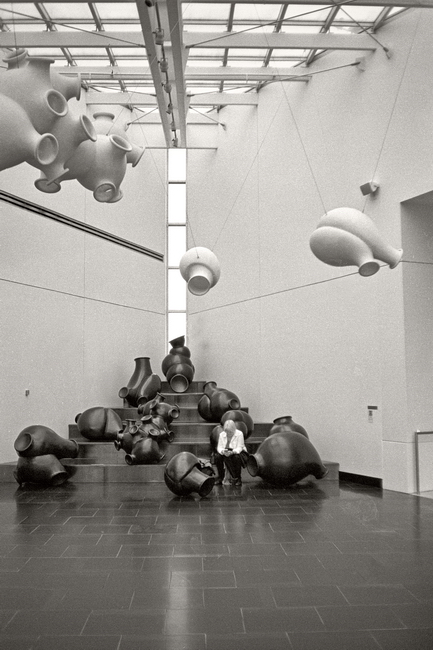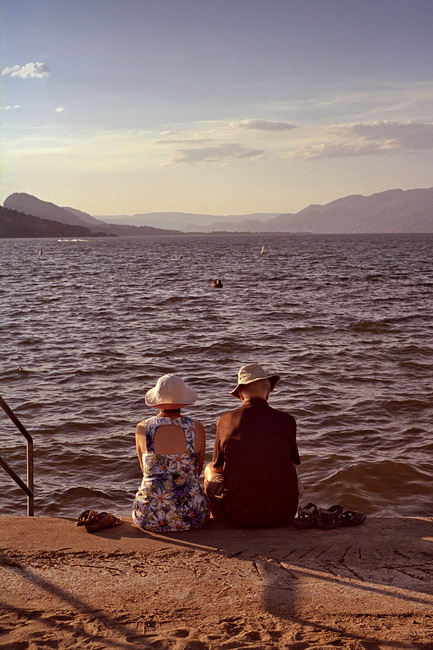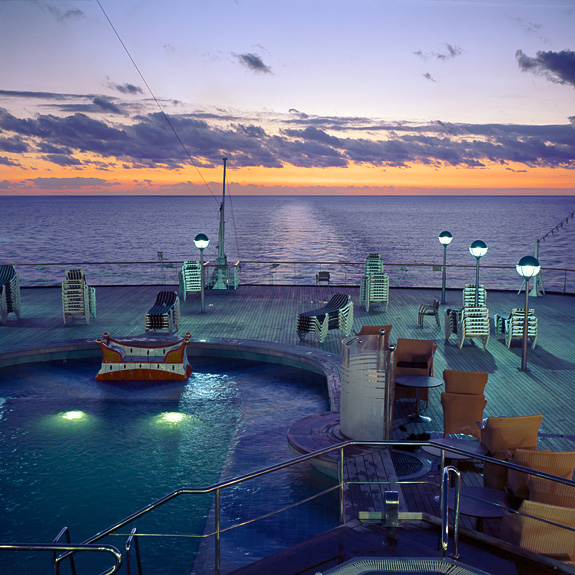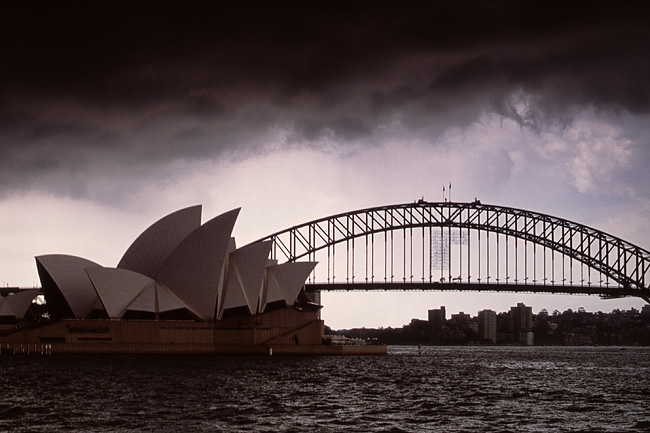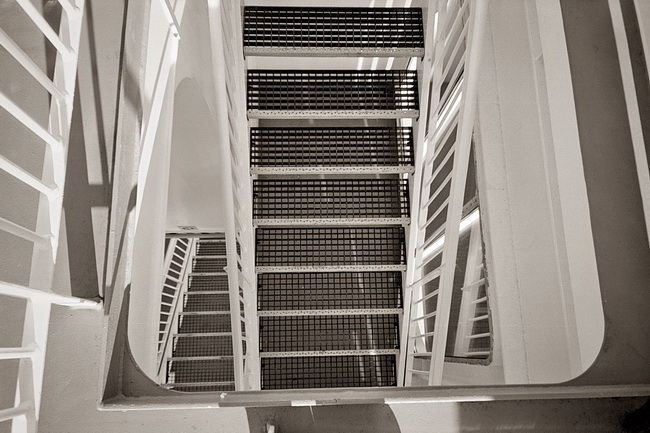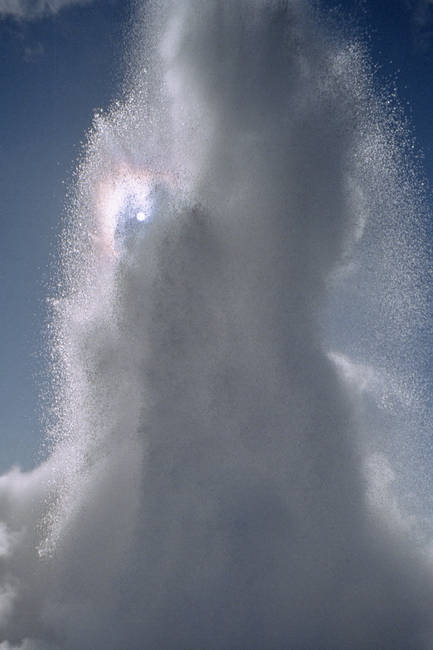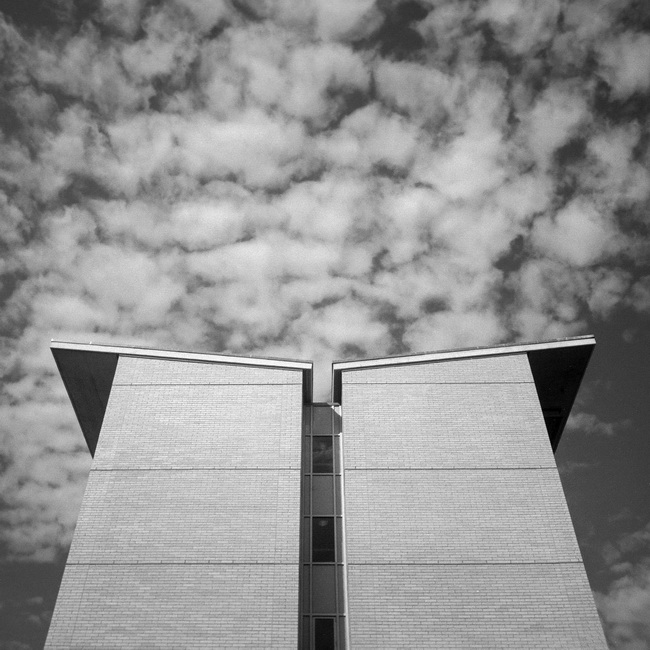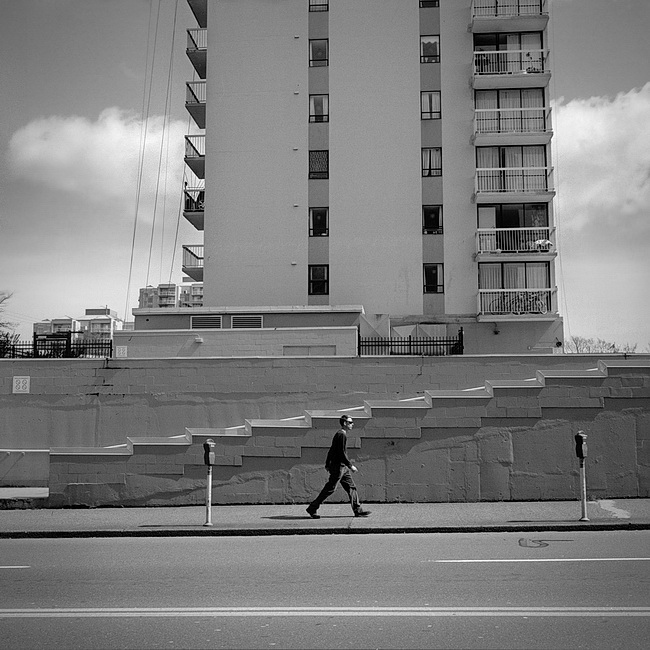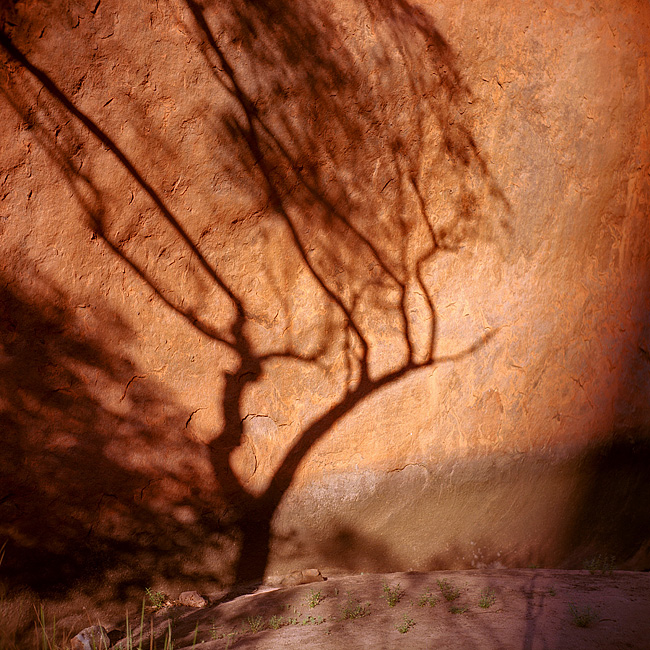Most photographers gravitate towards a one-lens solution, especially for their “walking around” camera. And more often than not, that one lens is a zoom. But what if you prefer the crisp images provided by so-called prime lenses? Or, what if your camera of choice is a fixed-lens classic, or a compact point-and-shoot model without a zoom? By using a couple of basic, old-time photographer’s tricks, you can combine the versatility of a zoom with the tack-sharp image quality of a single-focal-length lens.
Walking along a snowy beach one morning, I came across a pair of gulls that had attractively (and thoughtfully) posed themselves on a striking, Y-shaped log. I thought it’d make a good photo, so I aimed my camera and made the shot above. With one in the bag, I decided that a close-up of the two birds would be nice. Time to zoom in!
Taking care not to alarm the gulls, I took a few steps closer and took another shot. I moved nearer still, and snapped the portrait below.
The birds definitely knew I was there, but I continued to slowly approach them, taking a photo each time I “zoomed in” a significant amount. Eventually I was within a couple of feet of the pair and managed to get the shot below before backing away and leaving them to enjoy their morning.
Just by using my feet, I was able to accomplish something equivalent to a 10:1 zoom. That’s trick #1. But I wanted to get closer still, and that’s where trick #2 comes in: the post-capture crop!
One of the nice things about shooting full-frame is that you have plenty of data to play with — you can throw away half of it and still have enough for a respectable image. The photo above is about a 50% crop of the previous one. This amounts to adding another 2× to the zoom, for a total magnification of 20×.
Keep in mind that the camera I had with me that day was my Canon Sure Shot A-1, which is equipped with a fixed 32mm lens — hardly a telephoto. And yet, by simply using care while approaching the gulls, and by employing a little cropping, I was able to get a nice shot.
Although I’m really only being half serious here when I suggest that all this is the same as having a zoom lens, it is true that these techniques make it possible to achieve similar photographic results. There are clearly some situations where this approach won’t work very well (I wouldn’t, for example, try this with a grizzly bear), but it’s always useful to consider whether or not you and your camera are in the best possible position for a given photograph.

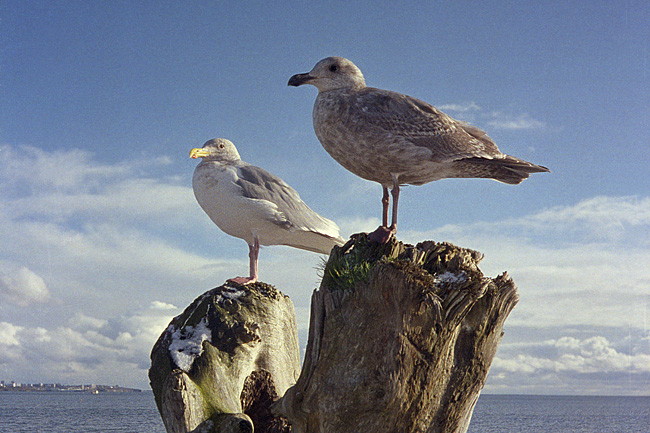
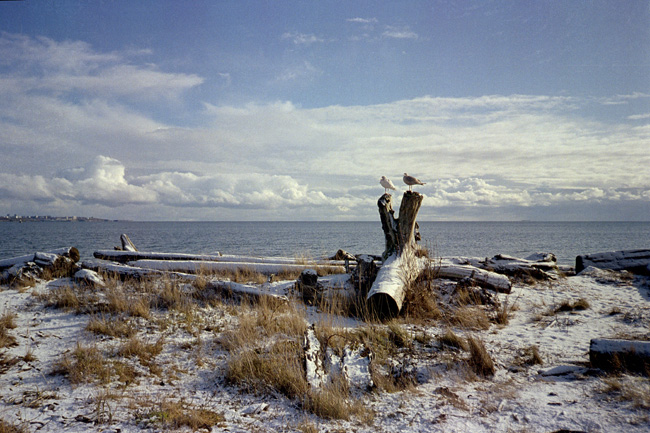
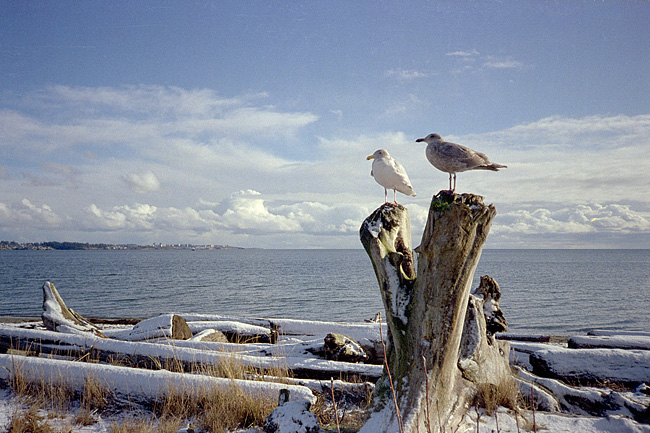
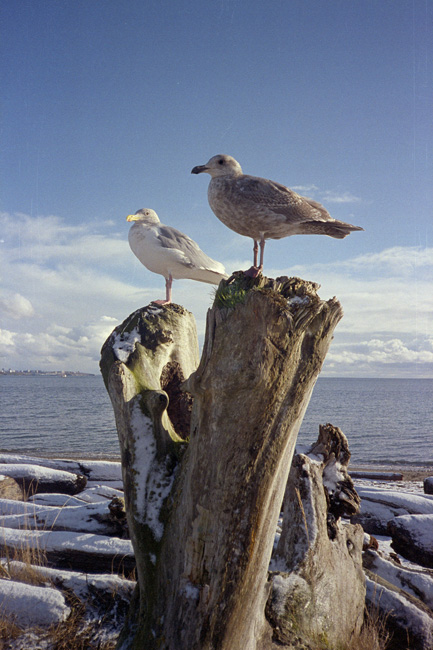
 Subscribe with RSS
Subscribe with RSS